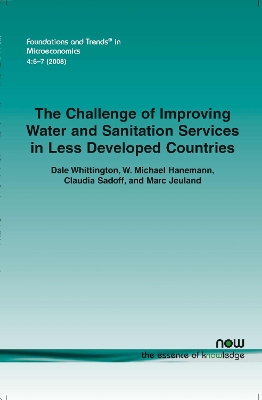Foundations and Trends (R) in Microeconomics
1 total work
The Challenge of Improving Water and Sanitation Services in Less Developed Countries
by Dale Whittington, W Michael Hanemann, Claudia Sadoff, and Marc Jeuland
Published 1 January 2009
This book shows that the key to successful water and sanitation investments is to discover forms of service and payment mechanisms that will render the improvements worthwhile for those who must pay for them. However for any investment, the outcome is likely to be context-dependent - the outcome depends on economic and social conditions, including how it is implemented, by whom, and to what extent complementary changes - in behavior, in institutions, and sometimes in economic organization - also occur.
The Challenge of Improving Water and Sanitation Services in Less Developed Countries is organized in three parts. Part I focuses on conventional network technologies for water supply and sanitation. Part II presents the probabilistic analytical approach that we use to analyze investments in the water and sanitation sector. In Part III we deploy this analytical framework to examine the costs and benefits of three specific low-cost, non-network water and sanitation interventions (deep boreholes with public handpumps, total community-led sanitation campaigns, and biosand filters) and one high-cost intervention (large multipurpose dams in Africa).
The Challenge of Improving Water and Sanitation Services in Less Developed Countries is organized in three parts. Part I focuses on conventional network technologies for water supply and sanitation. Part II presents the probabilistic analytical approach that we use to analyze investments in the water and sanitation sector. In Part III we deploy this analytical framework to examine the costs and benefits of three specific low-cost, non-network water and sanitation interventions (deep boreholes with public handpumps, total community-led sanitation campaigns, and biosand filters) and one high-cost intervention (large multipurpose dams in Africa).
